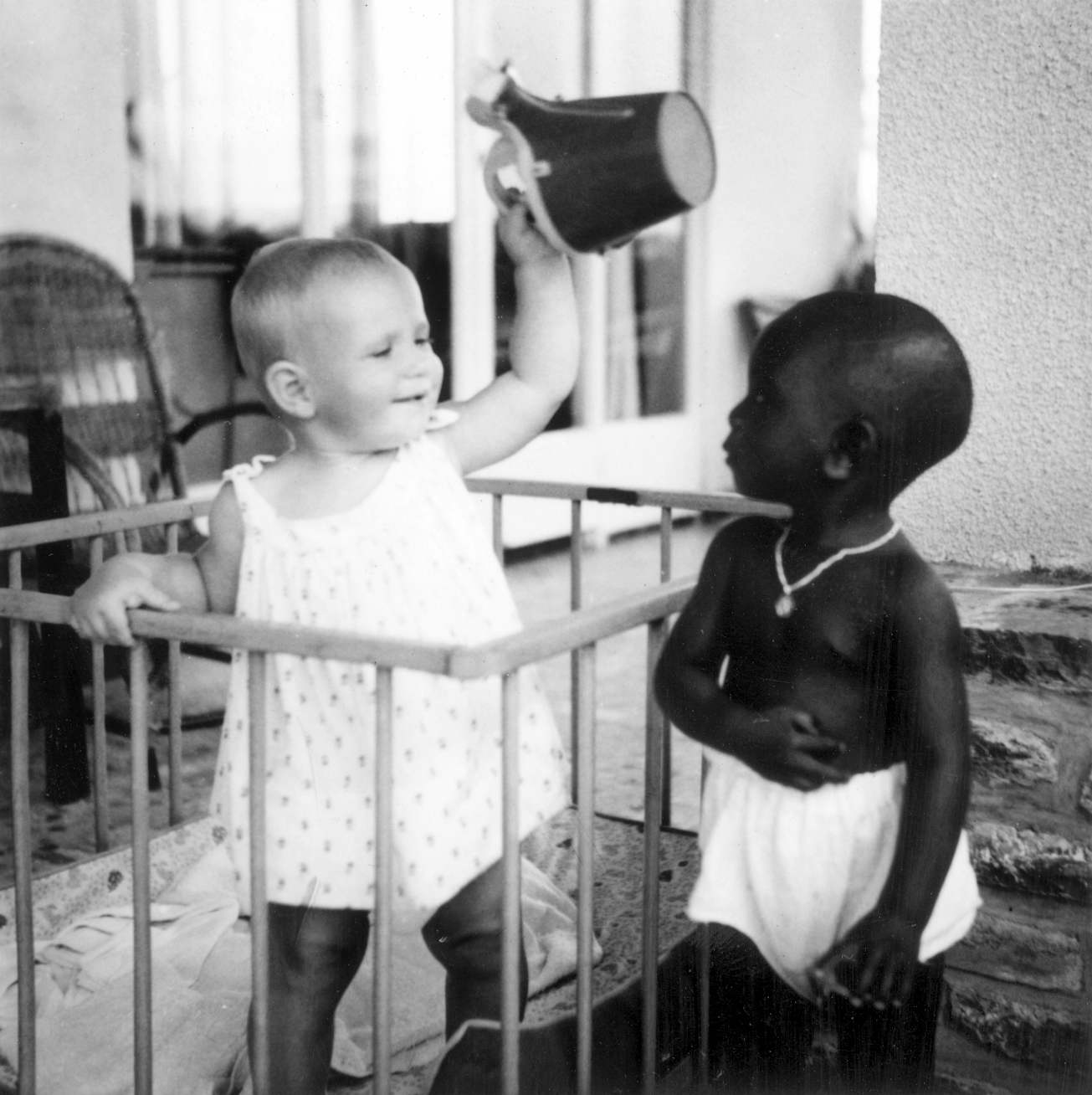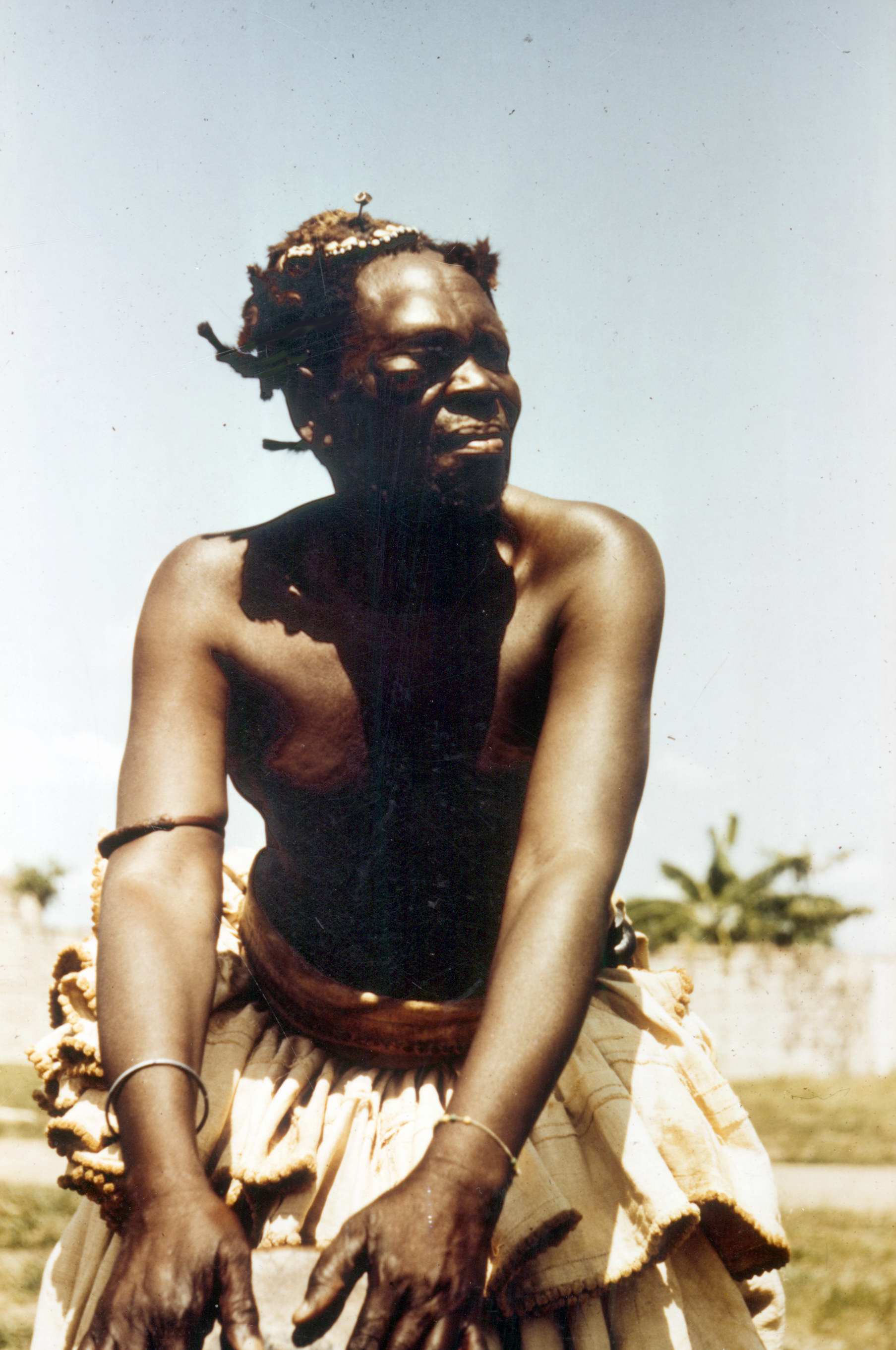
The photographic archives on the Belgian Congo
- Access and consultation : The Congo Photo collection is accessible online in digital form via Pallas or on the screens of the reading room. Its content is freely available for consultation.
- Reproduction : The contents of the collection may not be freely reproduced in the reading room. For any request for reproduction by CegeSoma teams, practical information is available here.
Collection description :
As part of the survey project on the social memory of former Belgian colonists conducted by CegeSoma since 2010, several photographic archives on the Congo have been compiled. The photos have been added to our 20th century image database. Their special feature is that they are original photographs, taken by private individuals, which therefore mainly concern daily life in the colonies in the 1950s as well as the colonists' perspectives on the main political events of the time.
These photos are accessible via the image database rubric of the site by entering either the name of the author of the photos if he/she is known to you, or a keyword that corresponds to what you are looking for (for example: Congo, colonies, colonists, independence, Africa, etc.). All these photos can be requested from Isabelle Sampieri. Here is a brief overview:
-
 Photos of Mr. Leruitte: photos of the massacres perpetrated in Katanga in 1966-1967 and various photos of the Congo;
Photos of Mr. Leruitte: photos of the massacres perpetrated in Katanga in 1966-1967 and various photos of the Congo; - Photos of Mr. Linet: views of Leopoldville, 1960-1962, photos of military parades on June 30, 1960;
- Photos of Mr. Jottrand: photos of daily life in the Belgian Congo in the 1950s, photos of the damage caused to European homes after the riots in Eville on 11 July 1960;
- Photos of Mr Jean Verstraete: photos of daily life in the Belgian Congo in the 1920s, photos of daily life in Dilolo between 1944 and 1946, photos of daily life in Leopoldville-Luluabourg-Eville-Jadotville-Kolwezi-Mutchatcha-Kasaji-Malonga-Dilolo from 1946-1947, photos of daily life in Malonga-Luashi-Kasaji from June 1948 to August 1952, photos of daily life in the Belgian Congo from 1949 to 1960;
- Photos of Mr Grosdent: photos of the Congo between 1948 and 1973, Phonthierville territory and Kasongo Territory;
- Photos of Mr. and Mrs. Vancompernolle: photos of daily life in the Belgian Congo (Katanga) between 1947 and 1962, photos of the Official School of Kipushi between 1947 and 1955, photos of ceremonies and celebrations in Belgian Congo between 1947 and 1955, photos of the school of the Major Massart camp in Elisabethville from 1955 to 1960, photos of walks, excursions and trips to the Belgian Congo between 1947 and 1951, holiday photos in Rwanda in 1952;

- Photos of Mr. and Mrs. Demeulemeester: photos of Rwanda between 1960 and 1990;
- Photos of Mr Debatty: photos of the Belgian Congo in Binga in the 1930s;
- Photos of Jacques Gobillon: photos of Leopoldville. Views of Leopoldville in 1955, photos of youth movements in Congo between 1955 and 1960, photos of daily life from 1959-1960, photos of Congo's independence celebrations on 30 June 1960, return trip to Belgium in July 1960, stops in Pointe Noire, Dakar, Abidjan and Vigo (Spain);
- Photos of Mr. Verfaille and Mrs. Quivron: photos of daily life in the Belgian Congo between 1954 and 1961;
- Photos of Monsieur de Maere: photos of daily life in the Belgian Congo between 1940 and 1960, photos of the visit of King Leopold and Princess Liliane;
- Photos of Marie-José Evert: photos of Burundi before and after 1960;
- Photos of Mr. Van Hoof: photos of the United Nations Secretary, Dag Hammarskjöld, in 1961, photos of Usumbura in 1959.
These photos of individuals have been complemented by the extensive collection of Belgian filmmaker André Cauvin (7,000 negatives and nearly 10,000 photographs), which mainly concerns his travels to Congo.
If you have photos relating to the Belgian Congo, you can always contact Gertjan Desmet (archivist). We will be happy to integrate them into our collections.
The following photo gallery gives an overview of the richness of the collections already acquired:
For more information :
- Anne Cornet & Florence Gillet, Congo-Belgique, 1955-1965. Entre propagande et réalité, Renaissance du livre, Bruxelles, 2010.
- Anne Roekens, Des clichés révélateurs : l'intérêt des photos amateurs pour l'écriture de l'histoire, dans Cahiers d'Histoire du Temps Présent, n°20, CegeSoma, Bruxelles, 2008, p. 267-280.